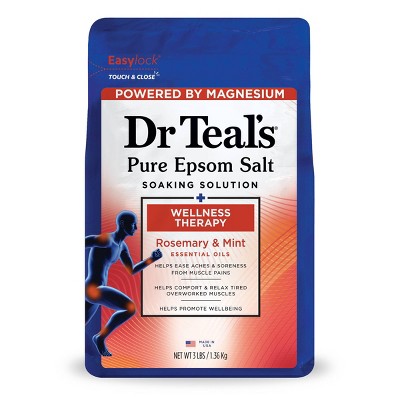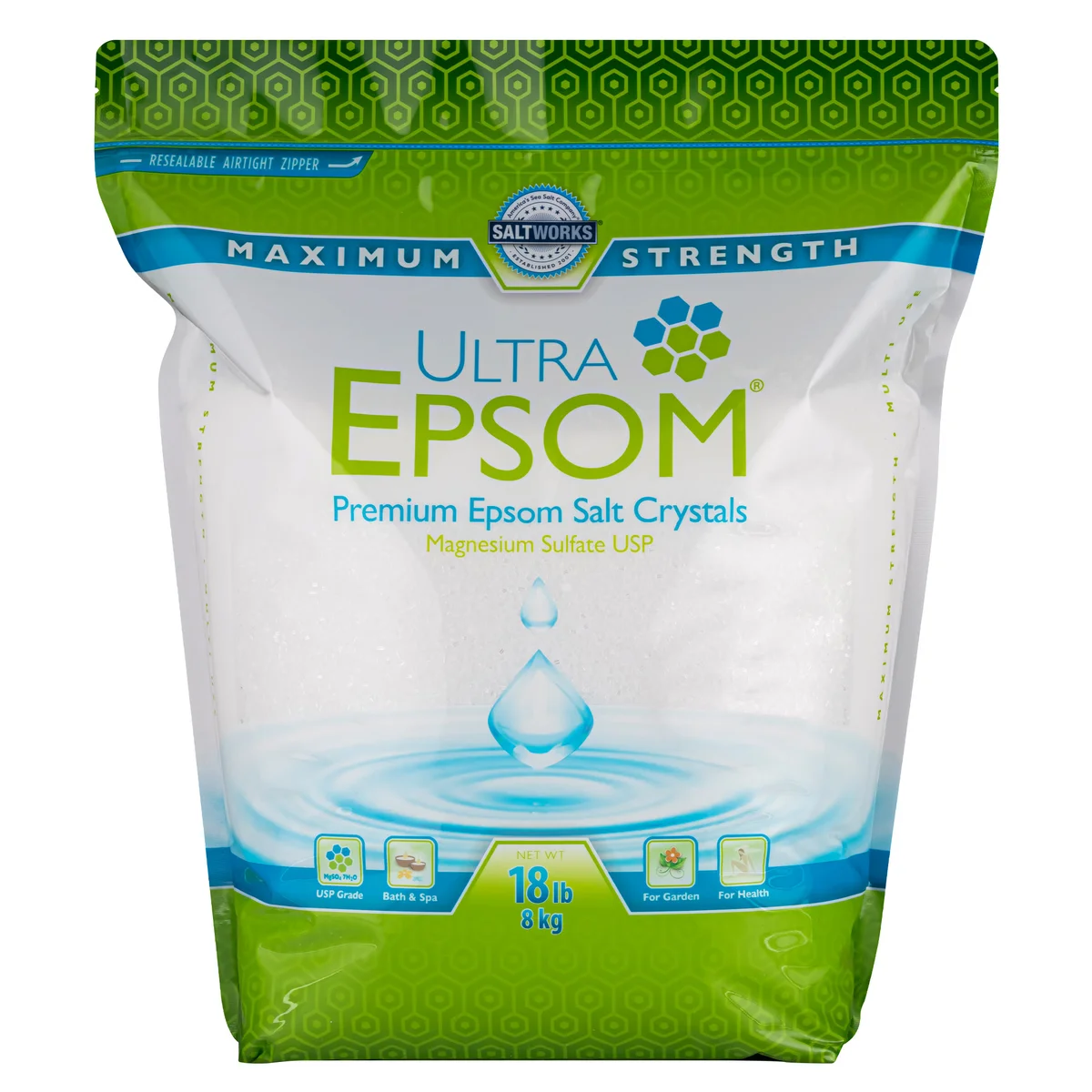Sometimes the best wellness habit starts with a warm soak and a little salt
As the seasons shift and we lean into routines that feel cozy yet functional, self-care is getting simpler—and smarter. One ritual that’s quietly trending again in wellness circles is the Epsom salt bath. It’s affordable, relaxing, and surprisingly being used as a tool to support weight loss. Whether you’ve seen it in MMA forums, TikTok beauty routines, or celebrity prep lists, the Epsom salt bath trick isn’t exactly new. But the way it’s being used to promote digestion, reduce bloating, and reset the body makes it worth revisiting. Here’s what it actually does—and how to try it safely.
What Is an Epsom Salt Bath and How Might It Help With Weight Loss
An Epsom salt bath involves dissolving magnesium sulfate crystals in warm water and soaking in it for about 20–30 minutes. The idea is that magnesium, when absorbed through the skin, can help the body detox, relieve inflammation, and ease muscle tension. As for weight loss? While it doesn’t “burn fat,” an Epsom salt bath may help you shed water weight, reduce puffiness, and support digestion. Some people say it helps them feel lighter and less bloated almost instantly, especially after travel, a salty meal, or before a special event.
The Real Effects: Water Weight, Not Fat Loss
Let’s be honest—what you lose after an Epsom salt bath is mostly water weight, not actual body fat. But that doesn’t mean it’s useless. If you’re retaining fluid or dealing with monthly bloating, even a two-pound drop in one night can help you feel more comfortable in your clothes. Athletes have long used hot salt soaks to cut weight before weigh-ins. While that’s a more extreme version, a gentle home soak can still give you a temporary transformation—and sometimes, that quick win is all you need to stay motivated.

How Magnesium Supports Digestion, Cravings, and Sleep
One of the main components of Epsom salt is magnesium—a mineral that’s often deficient in modern diets. Magnesium plays a key role in over 300 bodily processes, including digestion, blood sugar regulation, and stress response. Soaking in it may support smoother bowel movements, reduce sugar cravings, and help you sleep better. And we know poor sleep and stress are major obstacles for weight loss. If anything, an Epsom salt soak is a simple way to support your before bed routine and give your metabolism the calm it needs to function.
How to Prepare the Perfect Epsom Salt Bath for Weight Loss
Start by filling your bathtub with warm water—not too hot, ideally around 98°F to 102°F. Add 2 cups of Epsom salt (about 400–500 grams) and stir to dissolve. For added benefit, you can mix in a few drops of essential oils like lavender or grapefruit. Soak for 20–30 minutes, breathe deeply, and allow your body to fully relax. Afterward, wrap yourself in a towel, hydrate with lemon water or an immune support drink, and rest. Avoid eating heavy meals right after—you want your body in reset mode, not digestion mode.

What to Expect After a Bath: Realistic Results and How You’ll Feel
Right after soaking, you may notice reduced puffiness in your belly, face, or limbs. You might even drop 1–3 pounds on the scale—but again, it’s mostly fluid. More importantly, you may feel calmer, less bloated, and more mentally refreshed. If you’ve been stuck in a weight loss plateau, this reset may help you refocus your energy, especially when paired with a clean meal or fat-burning foods like leafy greens, protein, or detox-supporting smoothies. It’s about how you feel, not just what the scale says.
How Often Should You Take Epsom Salt Baths for Weight Support
For general wellness, 2 to 3 times a week is safe for most people. If you’re using it specifically to reduce bloat or prep for an event, one soak the night before may be enough. Avoid doing it daily—too much magnesium absorption (yes, it’s possible) can cause lightheadedness or fatigue. Also, avoid using Epsom salts in extremely hot water, which can overheat the body and cause dizziness. Think of this as a gentle detox tool, not an everyday routine.

Who Should Be Careful or Avoid Epsom Salt Baths
While Epsom salt baths are safe for most, people with certain conditions should consult a doctor first. If you have kidney issues, low blood pressure, or are pregnant, speak to a healthcare provider. Those with sensitive skin or open wounds should also use caution. And if you feel weak or dizzy after your soak, reduce the salt next time or shorten your bath duration. As with any wellness habit, personalization matters more than perfection.
How to Pair Epsom Salt Baths With Other Weight Loss Habits
Think of the Epsom salt bath as a complement to your health strategy—not a replacement. Pair it with nutrient-dense meals, light movement like walking or stretching, and gut-friendly recipes that support long-term transformation. A warm soak followed by a turmeric latte, a calming herbal tea, or a high-fiber dinner can enhance digestion and calm your nervous system. Some even include it in their weekly detox routine, alongside dry brushing, warm lemon water, and magnesium-rich foods like spinach and pumpkin seeds.
A Relaxing Ritual With Subtle but Powerful Benefits
Epsom salt baths won’t melt fat off your body—but they may help you feel better in your body. And sometimes, that shift is just as important. If you’re tired, bloated, or stuck in your routine, a 30-minute soak might be the gentle, nourishing transformation moment your body has been waiting for. Add it to your week not just to “lose weight,” but to reconnect with yourself, reset your energy, and release what your body no longer needs. That’s a form of progress too.